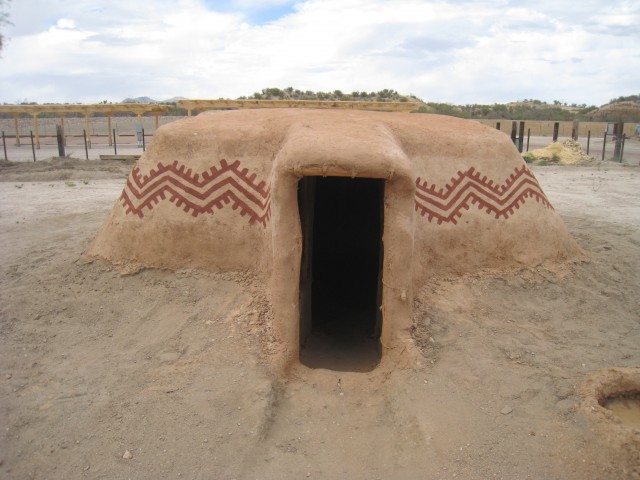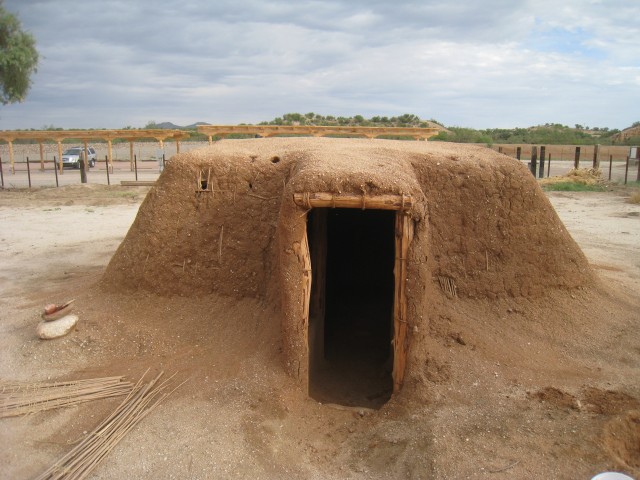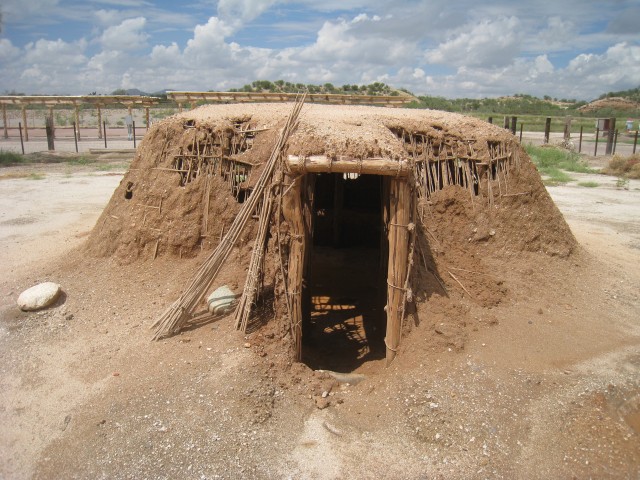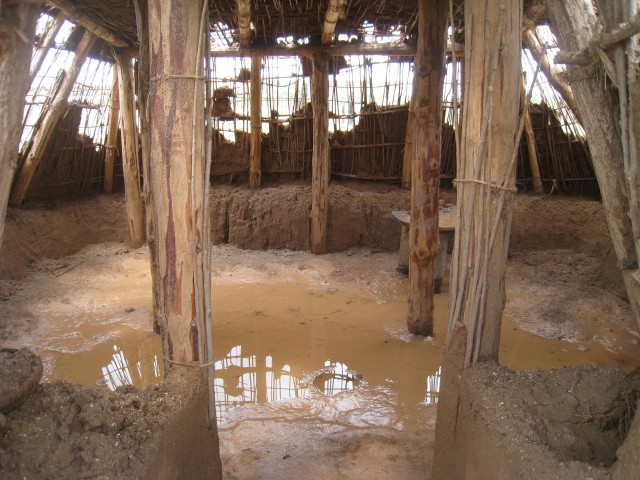- Home
- >
- Preservation Archaeology Blog
- >
- Meltdown!
On September 8, 2014, southern Arizona received heavy rains from a hurricane (Norbert) moving up along the Baja California of Mexico. Previous rains had caused some damage to our pilot pithouse experiment, but Monday’s storm dropped around 4 inches of rain in Oro Valley, melting a great deal of mud off of its superstructure and completely flooding it.


July 2014 rains had made a few small holes in the mud, but very little water had gotten into the house. The first good rain washed off most of the painted design. It seemed like the mud was holding up pretty well, though. People living in such a structure in the past would have had little trouble repairing this damage and keeping the interior nice and dry.


Mud from the upper portions of the walls washed away or slumped in. The roof actually stayed relatively intact, with losses mostly confined to the edges. I think about 40 to 50 percent of the mud on the structure was lost.
But we don’t see this as a tragedy—in fact, we’re pretty excited about what we’re learning. Remember that we built this as the first stage in a series of experiments, and now we have more information. If southern Arizona’s pithouse dwellers had built their structures just like ours, then a rain like this would have been devastating—most dwellings in a village would have been affected. It is possible that Hohokam pithouses had more thatching, or that the relative proportions of materials in our mud mixture need to be adjusted, or both. Now we’re designing the next stage of experiments to test these possibilities.

2 thoughts on “Meltdown!”
Comments are closed.
Explore the News
-
Join Today
Keep up with the latest discoveries in southwestern archaeology. Join today, and receive Archaeology Southwest Magazine, among other member benefits.

Is there any evidence that the door sill was at least as high as the surrounding ground so that water would not tend to gather inside, rather than flow away from the building?